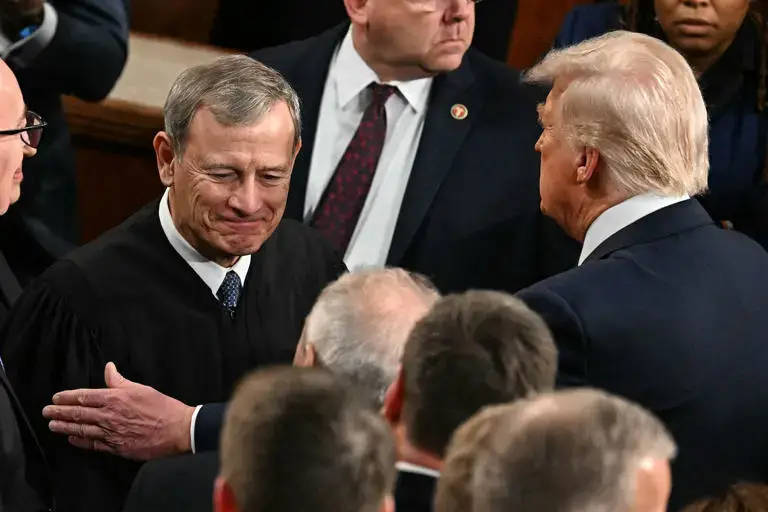In a closely watched decision this week, the U.S. Supreme Court announced that it will not review a challenge to university bias response teams, effectively leaving intact the lower courts’ divergent rulings on these controversial campus programs. The petition, brought by Speech First—a nonprofit organization devoted to defending students’ First Amendment rights—targeted Indiana University’s bias response team, arguing that its procedures penalize protected speech and chill open discourse. By declining to grant certiorari, the Court has allowed the dispute to persist at the circuit level, where some jurisdictions have found bias response teams unconstitutional while others have upheld them.
Conservative Justices Clarence Thomas and Samuel Alito issued a joint dissent, warning that the Court’s inaction would produce a “patchwork” of free-speech protections nationwide. Their concerns echo a broader debate over how colleges and universities balance their commitment to diversity and inclusion against constitutional guarantees of free expression. With no definitive guidance forthcoming from the nation’s highest court, both students and administrators face continued uncertainty regarding the permissible scope and procedures of bias response teams.
1. What Are Bias Response Teams?
Bias response teams are campus bodies—often comprised of faculty, administrators, and diversity officers—charged with receiving and addressing reports of bias or discrimination. In practice, these teams typically:
-
Accept complaints about language or behavior deemed offensive or discriminatory.
-
Investigate allegations, sometimes by interviewing the parties involved.
-
Recommend interventions, which may range from mediated dialogues to referrals for disciplinary proceedings.
Proponents view these teams as essential tools to foster a respectful, inclusive environment by providing a structured process for addressing harassment and bigotry. Critics, however, argue that bias response teams can overreach by targeting constitutionally protected speech—especially when reports stem from disagreements about political viewpoints or cultural norms.
2. Origins of the Indiana University Lawsuit
In 2022, Speech First filed suit in the U.S. District Court for the Southern District of Indiana, contesting Indiana University’s bias response policies. The organization asserted that:
-
Overly Broad Definitions: The university’s bias code encompassed “bias incidents” defined so expansively that even offhand remarks could trigger investigations.
-
Chilling Effect: Fear of reporting to—and potential sanctions by—a bias response team deterred students from voicing controversial but legally protected opinions.
-
Lack of Due Process: The administrative procedures allowed unsubstantiated allegations to advance toward disciplinary action without adequate procedural safeguards or clear standards.
Speech First sought declaratory and injunctive relief, aiming to prevent the university from enforcing its bias response protocols against students engaging in protected speech.
3. Circuit Split and Lower-Court Decisions
At the heart of Speech First’s Supreme Court petition was an existing “circuit split”—a divergence among federal appellate courts about whether bias response systems infringe the First Amendment. Key decisions include:
-
Fourth Circuit (Speech First v. Fenwick, 2023): Upheld North Carolina State University’s bias reporting system, finding that clearly labeled informational materials and voluntary participation posed no credible threat to free speech.
-
Seventh Circuit (Speech First v. Kountze, 2024): Struck down Loyola University Chicago’s bias response policies, concluding they amounted to “advisory referenda” with coercive potential and lacked clear procedural protections.
These conflicting rulings left universities in different regions subject to inconsistent legal frameworks, prompting Speech First to petition the Supreme Court to resolve the uncertainty.
4. The Supreme Court’s Decision to Decline Review
On April 30, 2025, the Supreme Court—without elaboration—denied the petition for certiorari in Speech First v. Indiana University. As a result:
-
Lower-Court Precedents Remain Binding: Both the Fourth and Seventh Circuit opinions continue to guide universities and students within their jurisdictions.
-
No Nationwide Uniformity: Institutions outside those circuits must look to their own regional appellate rulings, or district courts if no binding precedent exists.
-
Ongoing Litigation: Similar cases pending in other circuits will proceed without Supreme Court intervention, potentially generating further variance.
5. Thomas–Alito Dissent: Warnings of a “Patchwork”
Justices Clarence Thomas and Samuel Alito dissented from the denial, joined in part by Justice Neil Gorsuch. Their dissent voiced two primary concerns:
-
Inconsistent Protections: Students’ ability to challenge bias response teams should not depend on geographic location. Thomas observed that rights guaranteed by the First Amendment must be uniform across all states.
-
Risk of Censorship: The Justices warned that unchecked bias response procedures could suppress unpopular—but protected—views, chilling robust debate on campuses.
Their dissent emphasized the Court’s traditional reluctance to leave fundamental rights subject to varying interpretations by lower courts, especially when constitutional freedoms are at stake.
6. The First Amendment on Campus: A Delicate Balance
6.1 Free Expression Versus Campus Safety
Universities must reconcile two sometimes competing responsibilities:
-
Upholding Free Speech: The First Amendment bars public universities from disciplining students solely for expressing controversial viewpoints.
-
Ensuring Inclusive Learning: Institutions have a duty—both moral and regulatory under Title VI of the Civil Rights Act—to prevent harassment and discrimination that materially disrupt educational access.
The Supreme Court’s refusal to take up the Speech First case leaves these duties subject to regionally specific judicial interpretations.
6.2 Administrative Versus Disciplinary Channels
Bias response teams often operate outside formal disciplinary codes, offering informal interventions (e.g., facilitated dialogues). Whether these measures implicate constitutional protections hinges on:
-
Voluntariness: Actions requiring mandatory participation may more readily be viewed as punitive.
-
Official Sanctions: Referrals to formal disciplinary bodies can trigger due-process requirements.
-
Scope of Authority: Teams limited to reporting and education pose fewer constitutional concerns than those empowered to impose penalties.
7. Perspectives from University Administrators
Campus leaders responding to the Supreme Court’s decision have expressed relief that they may continue deploying bias response teams in alignment with regional legal standards. Key administrator viewpoints include:
-
Support for Early Intervention: Proponents argue that bias response mechanisms address issues before they escalate to formal complaints, preserving community trust.
-
Commitment to Procedural Safeguards: Some universities plan to refine their protocols by clarifying definitions of reportable conduct, ensuring notice to respondents, and offering appeal rights.
-
Focus on Education: Many institutions emphasize that bias response teams primarily coordinate workshops, mediation, and restorative practices—tools they regard as indispensable for fostering cross-cultural understanding.
8. Student and Faculty Reactions
Student opinion is divided:
-
Supporters: Students from historically marginalized groups often view bias response teams as vital channels for reporting harassment without fear of retaliation.
-
Critics: Free-speech advocates worry that vague “bias” categories can be weaponized to stifle dissent, noting that surveys indicate many undergraduates avoid controversial topics for fear of administrative scrutiny.
Faculty debates mirror this split: while some professors champion bias response initiatives as pedagogical assets, others caution that academic freedom requires clear boundaries to protect contentious research and classroom dialogue.
9. Implications for Future Litigation
With the Supreme Court’s door closed for now, attorneys predict:
-
Continued Circuit-Level Battles: Universities in the Fifth, Sixth, Ninth, and other circuits will see new challenges, each shaping the local legal landscape.
-
Legislative Responses: State lawmakers may seek to codify free-speech protections explicitly for their public universities, potentially preempting bias response policies.
-
Further Appeals: If circuit splits deepen, Speech First and similar organizations may renew Supreme Court bids—especially if lower-court decisions markedly diverge.
10. Best Practices for Universities
In light of the legal uncertainty, campus leaders are advised to:
-
Audit Policies: Ensure bias response protocols clearly distinguish between unlawful harassment and constitutionally protected speech.
-
Enhance Transparency: Publicize procedures, definitions, and grievance steps to reassure students that reports will be handled fairly.
-
Implement Training: Offer workshops for both potential reporters and respondents on free-speech rights and responsibilities.
-
Foster Dialogue: Balance enforcement with structured forums that encourage open debate on difficult topics.
By proactively addressing constitutional concerns, institutions can uphold inclusive values without infringing on fundamental liberties.
11. The Broader Context: Free Speech in the Digital Age
The debate over bias response teams intersects with contemporary challenges:
-
Social Media Spillover: Online remarks can trigger campus investigations, raising questions about jurisdiction and off-campus speech.
-
Surveillance and Anonymity: Digital reporting platforms may collect personal data, prompting privacy considerations.
-
Polarization and Misinformation: Universities must navigate false bias complaints weaponized for political ends, complicating response efforts.
These factors underscore the complex terrain universities traverse in regulating bias and preserving open expression.
12. Conclusion
The Supreme Court’s decision to decline review of Speech First v. Indiana University leaves unresolved a vital question: how can colleges and universities effectively address bias and discrimination without encroaching upon students’ constitutional right to free speech? Until the Court acts or Congress legislates, institutions and litigants will continue to grapple with regionally specific precedents—yielding a fragmented legal framework that Justice Thomas warned against.
As this issue evolves, stakeholders across higher education must remain vigilant: policymakers should craft clear, narrowly tailored procedures; litigants should pursue thoughtful, strategy-minded challenges; and administrators must foster campus cultures that both protect students from harm and champion the robust exchange of ideas. Only through deliberate policy design and open dialogue can universities reconcile their commitments to inclusion and free expression in an increasingly complex social and legal environment.

Adrian Hawthorne is a celebrated author and dedicated archivist who finds inspiration in the hidden stories of the past. Educated at Oxford, he now works at the National Archives, where preserving history fuels his evocative writing. Balancing archival precision with creative storytelling, Adrian founded the Hawthorne Institute of Literary Arts to mentor emerging writers and honor the timeless art of narrative.
